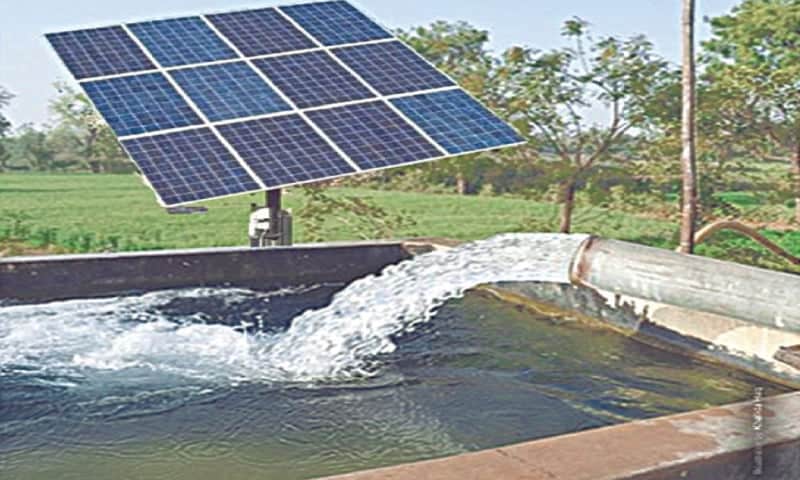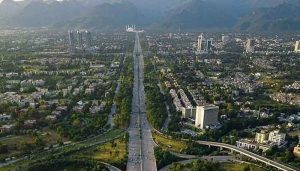Pakistan’s ever-increasing population and rapid urbanization intensify the pressure on its scarce water resources. The relentless expansion of concrete jungles is impeding natural groundwater recharge, while the growing demand for housing and infrastructure consumes fertile lands. At the same time, the climate crisis intensifies, manifesting in erratic rainfall patterns, prolonged droughts, and devastating heat waves. These factors collectively contribute to a perfect storm, threatening the country’s water and food security.
The agricultural sector, the backbone of Pakistan’s economy and a primary consumer of water, is particularly vulnerable. Declining groundwater levels and unpredictable rainfall have reduced crop yields in many areas, impacting millions’ food security and livelihoods. The situation is even more dire in arid regions, as farmers struggle with the dual challenges of water scarcity and extreme heat. The economic consequences are far-reaching, with families facing poverty and displacement.
It is imperative to recognize that groundwater depletion is intricately linked to broader environmental challenges. Addressing this crisis necessitates a holistic approach encompassing population control, sustainable urban planning, climate change mitigation, and efficient water management.
Solarization: Promise and Peril
The shift towards solar-powered tube wells in Pakistan is gaining rapid momentum, driven primarily by the escalating diesel and electricity costs. This transition promises many benefits, including reduced fuel expenses, decreased carbon emissions, and a potential alleviation of the country’s persistent power shortages.
However, the implications of this shift are far more complex than they initially appear. While farmers stand to gain significantly from the economic advantages of solar energy, there is a growing concern about the potential for unchecked groundwater depletion. The absence of recurring operational costs associated with solar power might inadvertently encourage excessive pumping. This, in turn, could lead to a rapid decline in groundwater levels, jeopardizing the long-term sustainability of agriculture and other water-dependent sectors.
The solarization of tube wells in Pakistan has several benefits. It provides a source of green energy and is climate-friendly, reducing the country’s carbon footprint. Additionally, solar tube wells will significantly decrease the oil import bill, as over 80% of tube wells currently run on dirty diesel fuel. This shift will also enable the government to save subsidies on electricity-run tube wells, particularly in Balochistan. Furthermore, solar tube wells will bring fallow land under cultivation, especially in desert areas where water is often shallow.
However, there are also potential drawbacks to consider. Unrestricted use of solar tube wells may lead to groundwater over-abstraction, although no concrete evidence suggests this. Another concern is the lack of standardization in the installed equipment, which may result in low-quality photovoltaic (PV) panels and pumps being installed, leading to high operation and maintenance costs.
Regional disparities in groundwater resources necessitate comprehensive assessments and region-specific strategies to prevent irreversible damage. Pakistan’s diverse geographical regions showcase varying degrees of groundwater availability and quality. With its relatively robust groundwater resources, what might be a viable solution in Punjab could prove disastrous for arid regions like Balochistan.
The government’s decision to promote solarization across the board raises questions about the depth of research and analysis underpinning this policy. A comprehensive assessment of groundwater conditions and region-specific strategies are essential to prevent irreversible damage. Moreover, the quality of groundwater is another crucial factor to consider. Over-extraction can lead to increased salinity and contamination, compromising water suitability for agriculture and human consumption.
In Sindh, significant challenges in groundwater management exist due to high salinity levels and the abundance of surface irrigation from the Indus Basin Irrigation System (IBIS). Despite high irrigation allocations, waterlogging remains pervasive, leading to surface salinity and reducing crop production effectiveness. The districts of Badin, Thatta, Sujawal, Tando Muhammad Khan, and Mirpur Khas, located in the coastal and southeastern regions of Sindh, face waterlogging and salinity issues due to seawater intrusion, poor drainage, high water tables, and regular flooding events. These factors result in stagnant water, reduced crop yields, and impacted agricultural productivity. The proximity to the Arabian Sea and the Indus River delta makes these districts vulnerable to saltwater ingress, worsening the issues. The waterlogging and salinity problems have severe implications for agriculture, soil health, and farmers’ livelihoods.
In contrast, Khyber Pakhtunkhwa (KP) has a relatively better groundwater situation but still faces challenges. The province’s groundwater resources are stressed due to over-extraction, particularly in agricultural areas. In the Peshawar basin, groundwater levels have declined due to excessive irrigation and domestic pumping.
The economic benefits of solar-powered tube wells are clear. Reducing fuel costs can mean the difference between profit and loss for small-scale farmers. The reliability of solar power, compared to the often-erratic supply of electricity, ensures consistent irrigation schedules, which is critical for crop health.
However, the social implications of groundwater depletion are severe. In many communities, water scarcity aggravates existing inequalities. Women and children, often responsible for fetching water, bear the brunt of increased distances and times needed to access safe water. This not only impacts their health but also their education and economic opportunities. Addressing the potential pitfalls of solar-powered irrigation requires solid policy and governance frameworks. The government must implement strict water usage regulations to prevent over-extraction. Water metering and pricing mechanisms could be introduced to ensure that the cost of water reflects its scarcity and the actual cost of extraction. These measures would help incentivize the adoption of water-saving technologies and practices.
Additionally, a concerted effort must be made to promote efficient irrigation practices. Techniques such as drip irrigation and sprinkler systems can significantly reduce water usage compared to traditional flood irrigation methods. Combined with soil moisture monitoring and crop selection suited to local conditions, these practices can enhance water use efficiency. The government must provide financial incentives and technical support to farmers who adopt water-saving technologies.
Investing in rainwater harvesting and groundwater recharge initiatives is another critical component of sustainable water management strategy. By capturing and storing rainwater, people can replenish their groundwater reserves and reduce dependence on tube wells. Green infrastructure such as permeable pavements, green roofs, and urban wetlands can enhance groundwater recharge while mitigating the urban heat island effect in urban areas.
Technological innovations also hold promise. Remote sensing and GIS technologies can provide detailed maps of groundwater resources, enabling better planning and management. Smart irrigation systems that use real-time data to adjust watering schedules can optimize water use and reduce waste.
Public awareness and education are crucial for promoting water-saving technologies and practices. Farmers must be educated about over-extraction risks and the benefits of water-saving technologies. Extension services and farmer training programs can be vital in disseminating this knowledge and providing technical support.
Experts also believe that groundwater tables fluctuate demographically, and solar is particularly suitable for areas with shallow groundwater tables and high replenishment of groundwater. The equipment cost exponentially increases as the water table’s depth rises, making it unviable for many farmers. Groundwater acts as a buffer during dry years; if we cannot conserve it, we may face frequent droughts.
Over-extraction of groundwater impacts water quantity and quality. A natural balance must be maintained, i.e., the amount of water extracted should not exceed the amount of water replenished. This happens through irrigation, precipitation, and surface runoff. Once the natural cycle is affected, it leads to negative consequences.
Ultimately, the success of solarization in Pakistan hinges on a delicate balance between harnessing the benefits of clean energy and safeguarding the country’s precious groundwater resources. It is a complex issue requiring careful planning, implementation, and monitoring. By adopting a proactive and data-driven approach, Pakistan can harness the power of solar energy while ensuring the sustainable management of its groundwater resources and integrating scientific research, innovative technologies, and community engagement to create a resilient and sustainable agricultural sector. With the right policies and practices, solar-powered tube wells can be a boon for Pakistani farmers, providing a sustainable path to farm productivity and water security.
Disclaimer: The views and opinions expressed in the article belong solely to the author and not necessarily to the author’s employer, organization, or other group or individual.














